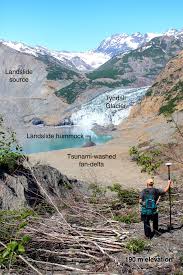Understanding the Alaska Landslide Tsunami of 2023

Introduction
The recent landslide tsunami in Alaska has drawn significant attention due to its potentially devastating effects on coastal communities and ecosystems. The event highlights the geological instability of coastal Alaska and raises important questions about disaster preparedness, environmental conservation, and community resilience in the face of natural disasters.
Details of the Landslide Tsunami
On October 14, 2023, a massive landslide occurred in the remote area near the village of Auke Bay, located in Southeast Alaska. Geological surveys indicated that approximately 6 million cubic meters of earth collapsed into the ocean, triggering a tsunami with waves reaching heights of up to 30 feet. The tsunami quickly propagated across Auke Bay and into nearby coastal areas.
The Alaska Tsunami Warning Center issued immediate alerts to local residents and fishing vessels in the area. Fortunately, the advance warning allowed for timely evacuations, and no fatalities were reported. However, damages to piers, boats, and local infrastructure were significant, prompting local and state governments to mobilize disaster response teams.
Geological and Meteorological Context
The region of Southeast Alaska is characterized by steep mountains and active glacial formations which are susceptible to landslides, particularly during periods of heavy rainfall or rapid snowmelt. Recent meteorological data indicated heightened precipitation prior to the event, which may have contributed to the instability of the slopes. Experts are currently studying the factors leading to this landslide to better predict and prepare for future events.
Impact and Response
The impact of the tsunami was felt not only in terms of physical damage but also on local communities, which depend on fishing and tourism. The local government is assessing the damage, while local fisheries are currently under scrutiny to prevent environmental degradation due to debris and potential contamination. Federal agencies, including FEMA, are assessing whether emergency assistance is needed and how to support rebuilding efforts in affected communities.
Conclusion
This landslide tsunami serves as a reminder of the fragile balance between human activity and natural systems in Alaska. As climate change continues to affect weather patterns and sea levels, the risk of similar events may increase in frequency and intensity. Ongoing research into geological instability and disaster preparedness will be crucial to protect and support Alaskan communities in the face of such natural disasters in the future.









